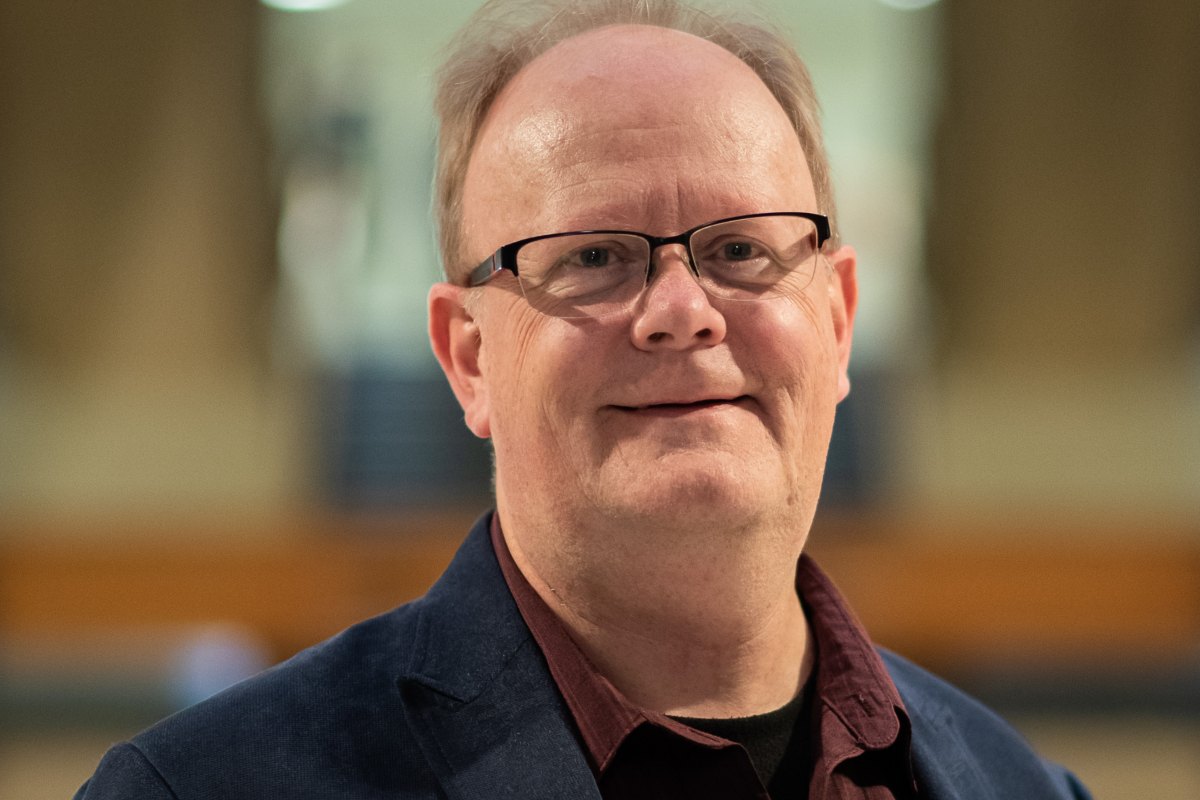
Thomas Hillen, professor in the Department of Mathematical and Statistical Sciences. Photo credit: Dawn Graves
Mathematical biology is everywhere—whether it is understanding the effect of physical distancing on spread of COVID-19 to modelling moose populations to measuring the rate of blood flow through the brain.
“In mathematical biology, we teach the mathematical foundations of calculus and we also show students how to use math to understand the biological world around us ranging from epidemiology to ecology to medicine,” said Mark Lewis, professor in the Department of Mathematical and Statistical Sciences and the Department of Biological Sciences. “I love the moments when we transition from learning a skill or a method to seeing mathematics as a powerful tool to illuminate the world around us.”
And in the midst of the pandemic, two University of Alberta faculty members are redeveloping their approach to teaching mathematical biology to undergraduate students in Calculus for the Life Sciences (MATH 134).
“The move to remote teaching allowed us to think deeply about the use of online material and videos,” explained Thomas Hillen, professor in the Department of Mathematical and Statistical Sciences. “We decided to produce two very different types of videos. While Mark uses his new lightboard, I am using a more presentation-style format, but also including a new character called Tollo (and his friends).”
The course now uses a blended and flipped structure, where students first encounter course concepts in pre-recorded videos. Then, in-class time is used to explore concepts further, discuss as a group, and apply the new ideas. Hillen and Lewis have taken different approaches building the videos, all with the student experience in mind.
With the help of his comic character Tollo, Hillen is helping students break down complex calculus concepts and apply them to real-world scenarios.
“Math can be quite intimidating to many students, and Tollo is a character who learns and understands with the students,” explained Hillen. “He struggles in a similar way and he misunderstands topics in a funny way. This allows students a moment of relaxation, and it helps students remember not to take everything too seriously.”
On the other hand, Lewis is using his home-built lightboard to develop videos, exploring concepts with students. Also known as a learning glass, a lightboard is a glass chalkboard that allows the presenter to face the viewers, while the writing on the board glows in front of the presenter.
“It is a lot of fun,” said Lewis, who was recently awarded the J. Gordin Kaplan Award for Excellence in Research, the University of Alberta’s most prestigious research award. “There is a lot of room to be creative, finding new ways to put math together with biology. Because this is a relatively new area, we can be pioneers and try things people have never done before.”
As the University of Alberta prepares to continue delivering course content primarily remotely in the Winter 2021 term, the Faculty of Science has connected with some of our top instructors and scientists to illustrate what the university experience will look like. While delivery may look different, what remains the same is our strong commitment to an engaging and quality education and experience for our students.
Learn more about collaborative mathematical biology on our website, and discover what campus life looks like in the 2021/21 academic year.